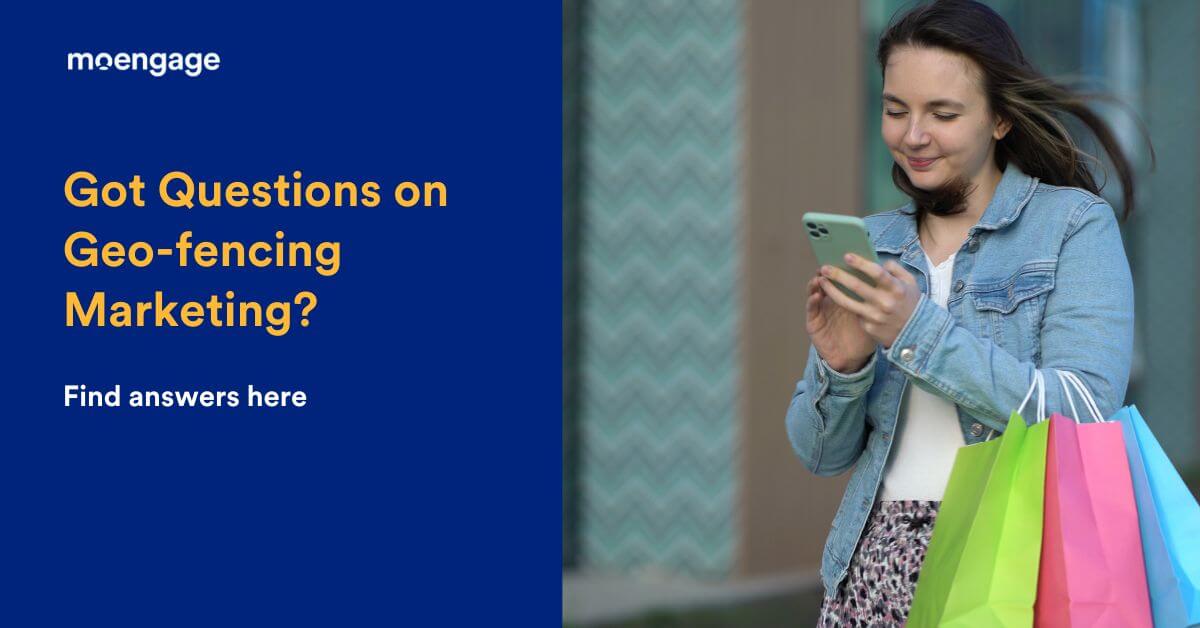What is Geofencing Marketing?

Reading Time: 6 minutes
Much of the most effective digital marketing doesn’t just take place on consumer computers. Many brands push their digital ads into the mobile arena, offering specially triggered marketing materials to consumers’ mobile phones based on geography and travel patterns.
It’s less complicated than it sounds, called geo-fencing marketing. Geo-fencing marketing can be highly effective and beneficial for your brand, but you must know how to leverage it properly.
What is Geofencing Marketing?
In a nutshell, geo-fencing marketing means setting up a virtual boundary around a specific point, say your physical store or another area. Whenever a consumer with a mobile device crosses that “geo-fence,” they receive a push notification, an SMS, email, or other advertisements for the store, brand, service, or product.
For instance, a customer walking down a busy city street might cross a local restaurant’s geo-fencing marketing boundary. When they cross the boundary, they receive an advertisement from the restaurant announcing a special deal on lunch for the day. Inspired, the customer decides to dine at the restaurant – at least, that’s the idea.
How Does Geofencing Marketing Work?
Technically, there are three different ways geo-fencing marketing can work:
First, a brand can set up a center point, such as a building or property, around a geo-fence. Then, the brand’s marketing software automatically sends an advertisement to anyone with an appropriate mobile device that gets close to the center point.
Second, using transportation methods, brands can calculate how much time it takes for a person to reach a specific point from other locations. This is accomplished by using travel time maps, also known as isochrones. Companies can then send advertisements only to consumers who travel to their business at or during specific times.
Third, companies can utilize building footprints. They measure polygons to determine the physical boundaries of a specific point of interest, like a brick-and-mortar store. Then the business sends notifications or ads to consumers who set foot on the property or within the target building.
Your business can choose from these potential methods based on your goals, technology, and customer preferences. Here are some examples of companies using geo-fencing wisely and effectively:
Starbucks often uses geo-fencing marketing to promote drinks to various customers, usually when those customers walk next to a business or are in a coffee shop.
Johns Hopkins Hospital has also uniquely leveraged geo-fencing. Specifically, it targets individuals for new job openings by crafting social media ads that appear on the news feeds of qualified customers who walk near the hospital
Uber’s rideshare service has used geo-fencing marketing substantially well. It makes fences around hotels, nightclubs, airports, and other traffic hotspots. When individuals get off a plane or exit a hotel, they receive a push notification from Uber.
It’s worth mentioning that geo-fencing has other uses besides marketing purposes.
For example, certain car makers such as Mercedes and BMW use geo-fencing for navigation assistance and ensuring safety.
BMW’s eDrive Zones digital service uses geo-fencing technology in new hybrid models that allow them to switch to electric when they enter designated ‘green zones’. In contrast, Mercedes uses geo-fencing tech to define an area where your vehicle is free to move (so you can keep track of the car when someone else is using it).
This isn’t to compare these two brands and say one is better or safer than the other, as both are highly reputable and score highly on the NCAP safety ratings. But it is to say that what BMW and Mercedes are doing indicates how more major companies are starting to rely on geo-fencing for various purposes.
Benefits of Geofencing Marketing
When used smartly, geo-fencing marketing can be highly effective and benefit your brand significantly.
For example, geo-fencing marketing allows you to personalize communication to those best suited for specific ads. Say that you have a customer walking by your retail store. Based on their past purchases, you know that they’re likely to purchase if they know that you have a special discount.
When they walk near your store, they receive a push notification ad that inspires them to stop by and check out the discount. This is a great way to make more sales to help bolster your business in the face of a potential upcoming recession, which has become a significant concern of small business owners across the board. In a recent survey, a third of respondents expressed concern about how inflation and future economic conditions would impact their businesses.
Geo-fencing marketing can also be integrated with hyper-local targeting, enabling you to filter your target audience members further and advertise to the consumers most likely to make purchases in the first place. This, in turn, will help to improve customer engagement and response rates across the board.
Simply put, consumers are more likely to respond to brands and ads that they feel are tailored to their interests or needs. All of this contributes to enhanced customer experience: a significant consideration, given that your brand has to thrive in the competitive market.
What is the Cost of Setting Up a Geofencing Marketing Campaign?
In most cases, geo-fencing marketing campaigns are priced with the CPM or cost-per-mile model. You pay a set price for every 1000 impressions for your advertisements, and pricing ranges are usually between $3.50-$15 CPM for mobile and/or desktop ads.
Alternatively, you can always opt for the CPV or cost-per-visit model. That way, you only pay for advertisements that convert viewers into store visitors. You should expect to spend between $10,000 and $15,000 per month for your geo-fencing mobile marketing campaign.
If you don’t have the budget to invest in a marketing campaign on this scale, you can always put the cost or part of the cost on a business credit card. Remember that average processing fees are 3.5% for online transactions, so be sure to factor this into your overall budget.
Geo-fencing Marketing Tips/Best Practices
To make the most of your geofencing marketing campaign and advertisements, you’ll want to keep a few essential best practices in mind.
For starters, be very specific with all of your in-app notifications. Remember that the goal of each notification is to inspire an action in a prospective customer. Thus, your notifications should include CTAs/calls to action with urgency, attractive discounts or perks, and more.
Next, set up your geo-fence, so it is localized and specific. It should usually be between four and five miles in radius. Geo-fencing advertisements are most effective if customers see your store or brand immediately before or after the push notification.
Lastly, don’t forget to respect your customers’ privacy at all costs. You always have to ask for your consumers’ permission, plus give them enough information to know how your location-based targeted advertising works (and how it is in their best interests).
How to Set Up Geofencing Marketing with MoEngage
MoEngage’s comprehensive customer engagement platform can help you set up and run an effective, high-converting geofencing marketing campaign in no time.
Launch an Actionable Ad
To begin, make sure you launch an actionable push notification. Again, don’t forget to include an urgent CTA or incentive that makes viewers want to click or visit!
Boost Brand Awareness
With MoEngage, you can boost brand awareness by carefully analyzing the communication you put out. Using our AI-powered optimization tools, you can improve the ROI for each prospect your geofencing marketing campaign brings in.
Measure and Manage Data-Driven Iterations
Furthermore, MoEngage allows you to measure all of the data-driven interactions your push notification ads inspire, ranging from visits to your website to your retail store. Use MoEngage to understand better which messages perform well with your target audience members and which ads need to be improved.
Boost Engagement and Conversions
As your geo-fencing marketing campaign continues, repeatedly iterate on your communication to boost engagement and conversions. If, for instance, you have two very similar promotions you’ve provided so far, and one does better, tweak the lower-performing ad so it’s more like its superior counterpart.
Use All Your Targeting Techniques
The best geo-fencing marketing efforts leverage specific, effective targeting. Therefore, you should use all the targeting techniques at your disposal.
With MoEngage, you can take advantage of advanced customer insights and analytics tools, plus orchestrate customer journeys from start to finish. Our platform allows you to build relevant, engaging customer experiences at every touchpoint, from initial brand impressions to final purchases.
Increase Sales by Driving Traffic
Try to use your geo-fencing marketing to drive traffic to your store. In this way, you’ll be able to surprise and delight your customers with other marketing materials, excellent discounts, friendly customer service, and other factors. All of this may contribute to more sales and a better bottom line.
Wrap up
Geo-fencing marketing is a powerful tool in your hands. It can present communication to the customers most likely to visit your brand or make impulsive purchases, especially if set up smartly. The more you use geo-fencing marketing, the better you’ll also understand your target audience members.
With MoEngage, you can maximize the effectiveness and the results of your geo-fencing marketing campaigns. Our customer engagement platform will give you a greater understanding of your target audience members and how they react to individual advertisements, allowing you to continually cultivate a better customer experience.







